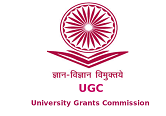In Vitro Testing of Protective Eye Wear in Blocking Blue Light from Dental Light Curing Unit
A Pilot Study
DOI:
https://doi.org/10.55995/j-cpi.2024014Keywords:
Blue light hazard, ocular damage, Degree of Conversion, composite resinAbstract
- Aim: To evaluate the ef?cacy of wearing protective eyewear in preventing harmful Dental light-curing units (LCUs).
- Background: Dental light-curing units generate blue light, capable of inducing soft-tissue burns and ocular harm like retinal damage. The intensity of blue light emitted by dental Light Curing Units is substantially higher, thereby potentially constituting a significant "blue light hazard."
- Material and Methods: To study the effect of protective glasses, reverse methodology was followed as the effect of blue light on the eye is difficult to measure; Circular composite disc samples were grouped into two, one of which was polymerized directly while the other had protective glass in between, Fourier transform infrared spectroscopy (FTIR) analysis was done and the degree of conversion was calculated.
- Results: Data obtained were analysed using One Way ANOVA. The mean values for "Degree of Conversion" in Group I (Without Protective Glass) is 1.334 +512 and for Group II (with protective glass) is -2.623 + 1.544 .One Way ANOVA revealed statistically significant difference between Group I and Group II (p=0.000)
- Conclusion: Within the limitations of this in vitro study, it can be concluded that the protective glasses are successful in filtering the harmful blue light emitted by LCU and should be used in day-to-day practice to improve the amount of light they deliver to the restoration from the LCU and prevent any harm to the ocular tissues.
- Clinical implications: Blue light filtering glasses in a dental operatory provide optimum protection, and the operator can safely watch and improve the amount of light delivered to the restoration from the LCU.
Downloads
Published
How to Cite
Issue
Section
License
Copyright (c) 2024 The Journal of Clinical Prosthodontics and Implantology

This work is licensed under a Creative Commons Attribution-NonCommercial 4.0 International License.
The entire contents of the Journal of Clinical Prosthodontics and Implantology are protected under Indian and international copyrights. The Journal, however, grants to all users a free, irrevocable, worldwide, perpetual right of access to, and a license to copy, use, distribute, perform and display the work publicly and to make and distribute derivative works in any digital medium for any reasonable non-commercial purpose, subject to proper attribution of authorship and ownership of the rights.






